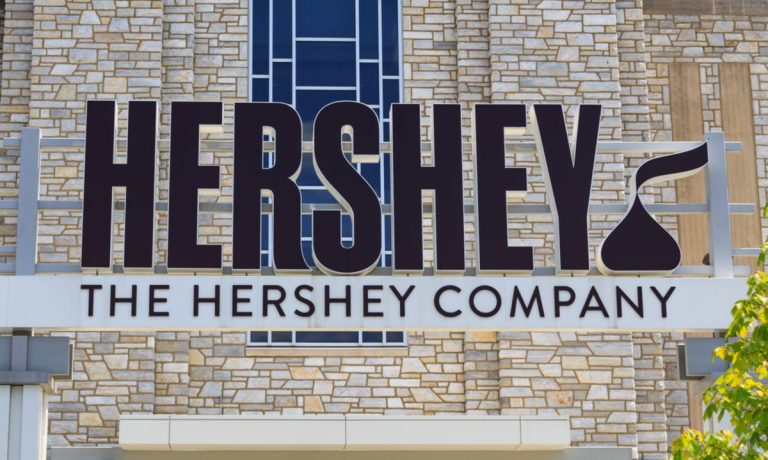
One might expect that sales of non-essentials like candy would suffer from consumers’ belt-tightening during times of high inflation, but confectionery giant Hershey said Friday (Nov. 4) just the opposite is happening.
The sweet treats company noted on a call with analysts discussing its third-quarter financial results that, rather than cutting out chocolate, consumers are indulging more during this period of economic duress.
“We continue to see that our products remain an affordable treat for families and for consumers,” Hershey’s CEO Michele Buck said. “And we know that part of that is they want to reward themselves when times are tough. They also use these products to relieve stress, and we think that those trends will continue.”
Regarding the issue of consumers trading down to private label, Hershey is taking a somewhat more measured view of the matter than the many food and beverage (F&B) companies that have been downplaying the issue. Food manufacturers including Kellogg’s and Mondelēz International have been arguing that grocery brands are largely protected from trade down and other inflation-related budgeting actions, asserting that these changes mostly affect big-ticket items and experiences.
Indeed, there is some truth to their observations. A Sunday (Oct. 30) showed that spending on cars, movies and hotel bookings have all dropped, with consumers drastically reducing their plans for major purchases.
However, Buck conceded that there are some categories in the company’s portfolio in which “private label has really dialed up,” although she noted that the confectionery and sweet treats categories have “tended to fare pretty well during these times” because these items offer “an affordable indulgence.”
Certainly, consumers are minding their F&B spending. Research from the August edition of PYMNTS’ Consumer Inflation Sentiment study “Consumer Inflation Sentiment: Inflation Slowly Ebbs, but Consumer Outlook Remains Gloomy,” which drew from a survey of more than 2,100 U.S. consumers, noted that 37% reported reducing the quality of items they buy at the grocery store in response to rising prices. Moreover, 62% reported cutting down on nonessential grocery spending.
Yet, non-grocery categories are indeed bearing more of the brunt of these actions. The same study found that 70% of consumers have cut back on nonessential retail spending, and 78% have been eating at home more often to save on the cost of dining out.
Yet, grocery prices are inflating quicker than other categories. Data from the U.S. Bureau of Labor Statistics (BLS) Consumer Price Index for All Urban Consumers (CPI-U) found that consumer grocery prices were up 13% year over year in September, well above the inflation rate for all items, 8.2%. Still, it appears that a significant share of consumers continues to buy their favorite indulgent foods, with inflation perhaps affecting how they shop but not necessarily what they purchase.
“While inflation has driven some changes in consumers’ shopping behaviors, including channels shopped and pack sizes purchased, our products have remained a key component of consumer baskets,” Buck said in her prepared remarks.